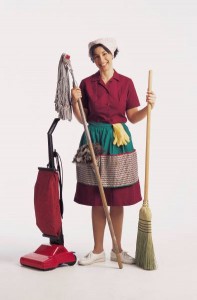 When someone has ideas about increasing efficiency while using time wisely, I perk up and absorb the tips and tricks from her experiences.
When someone has ideas about increasing efficiency while using time wisely, I perk up and absorb the tips and tricks from her experiences.
Getting the cleaning done in the least amount of time is my ideal goal because I really like the result, not the process.
In our guest post today, Silvia Marks shares how she started many projects and completed none. Many of you have expressed how you can relate to that scenario. Well, help is near.
Thank you, Silvia, for showing us how to prepare for mastering the art of speed cleaning. Happy cleaning! ~ Tracy
Mastering the Art of Speed Cleaning
It is true, that cleaning is the most time consuming and arduous household chore you can do. But that shouldn’t deter you from doing it.
In fact, if you take some time to learn and practice this art, you will see that a job which previously took you hours to complete will seem like a 10-minute Power-Point presentation.
There are numerous factors that must be taken into consideration when attempting anything resembling speed cleaning. For example, you must be a physically active individual, who is inherently good at multitasking and logical thinking.
The more you develop these skills, the better you will become at cleaning like a pro. But talent isn’t everything – far from it. In order for you to become truly proficient at speed cleaning, you must familiarize yourself with the experience. Let’s have a look:
Assess the Premise
It doesn’t matter if you are cleaning your whole house, a particular room or just the stove, you must always know exactly what it is that you will be cleaning.
You should take into account the size and shape of the object that needs cleaning, as well as the level and nature of the contamination. For example, cleaning grease off your kitchen floor is quite different from cleaning the attic.
Choose your Tools
Everything, from brooms to brushes and mops to dusters, must be readily available for your convenience. The trick behind doing anything fast is being prepared beforehand.
That is why after you have assessed the very thing that you are going to clean, you must know which tools are appropriate for that particular scenario.
Floors are swiped with a broom, mopped with a mop and vacuumed with a vacuum machine. Kitchen tops would require either soft or hard brushes (depending on the surfaces). Gather all your tools in one place and begin sorting out your detergents.
Select your Detergents
Like pieces of a puzzle, you must now connect the proper tool with the proper detergent. And again, bathroom tiles are best washed with bleach and ammonia.
Carpet cleaner Lewisham says that carpets and rugs can be treated with white vinegar or baking soda. Hard wood surfaces are handled with the proper hardwood detergents. Usually a bottle of all-purpose detergent will be sufficient to clean most parts of your home.
Put your detergents next to your tools and move on to the next step.
The “Pyramid” Approach
Imagine the room or appliance you are cleaning to be the shape of a pyramid. But unlike a pyramid, we are going to go contra-intuitive in our cleaning endeavor and start from the top. This is logical if you think about it.
Whatever you clean and however you clean it, gravity will always push the dirt and contamination right back down on the floor. That is why starting from the top and working down will be your best course of action.
Cleaning is an Elimination Match
When I first started cleaning on a professional level, I had difficulty finishing projects because I was too concerned with doing everything fast. I would often start cleaning multiple things all at once and finishing none!
When you clean, make sure that you finish one project before jumping onto the next. This approach will not only save you valuable time, but it will also break your work into smaller chunks.

Thanks, Silvia, for sharing these tips with us. I also find the pyramid approach helpful as cleaning from top to bottom keeps everything clean. Appreciate your guest post today.